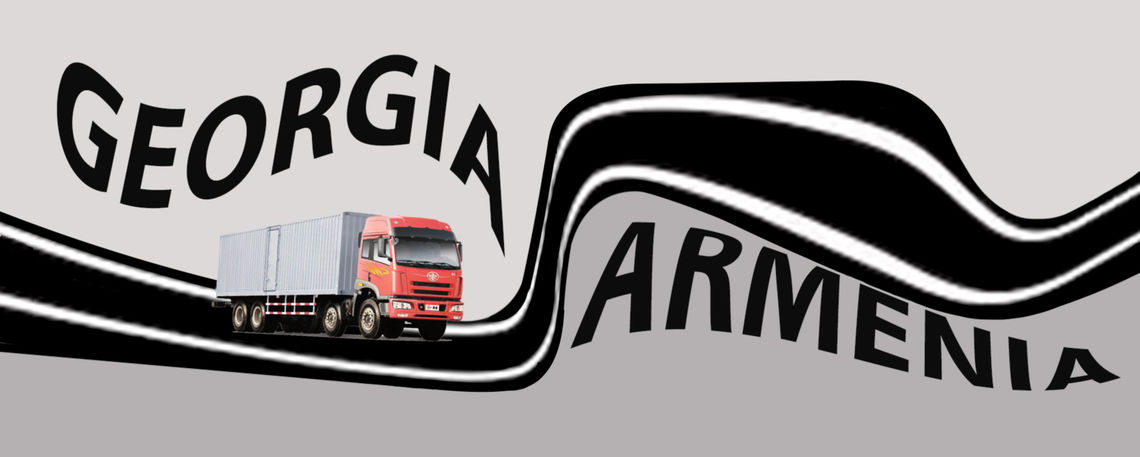

In September of this year, a delegation headed by Georgian Prime Minister Mamuka Bakhtadze visited Armenia. This visit was promising in terms of developing economic relations: the Georgian delegation proposed that trade turnover between the two countries should reach the $1 billion mark in coming years. The proposal was naturally welcomed and approved by the new Armenian government. At the time, Prime Minister Nikol Pashinyan stated, “Our goal is to have the economic component of our relations on par with the contextual and emotional relations that exist between our people.” Following those talks, it was announced that in the near future an Armenian-Georgian intergovernmental session will take place, during which a road map will be established to develop relations, focusing specifically on trade and economic relations.
Trade Turnover
According to the Statistical Committee of the Republic of Armenia, in 2017 the trade turnover between Georgia and Armenia amounted to $250 million, 3.9 percent of Armenia’s total foreign trade. Numbers from the National Statistics Office of Georgia are quite different. According to Georgia, the trade turnover between the two countries is $491.6 million, accounting for 4.6 percent of Georgia’s foreign trade. The difference in numbers, in essence, is based on methodology. According to the methodology used by Armenia’s Statistical Committee, banknotes, monetary gold, transit of foreign cargo through the country, foreign goods sent or imported for expos and fairs are not included as indicators. Georgia’s National Statistics Office uses what is considered to be the “General Method” when calculating its foreign trade turnover. This means the import and export of goods are registered as soon as said goods cross Georgian economic territory. The director of Tbilisi State University’s Analytics and Forecasting Center, Vakhtang Jarayan, explains the difference in numbers thus: “For example, a car is being sent to Armenia from Germany. This usually happens through Georgia. Armenia registers this as an import from Germany, while Georgia registers this as a Georgian re-export.”
Moreover, according to Jarayan, there are instances when goods cross the border at a certain price, but the import is registered with a completely different price.
Additionally, Georgia is one of the few partners Armenia has with which it has a surplus in its foreign trade turnover. This means that more goods are exported from Armenia to Georgia than is being imported from Georgia to Armenia. According to data from Armenia’s Statistical Committee, $155.2 million worth of goods were exported to Georgia from Armenia and only $93.8 million worth of goods were imported from Georgia to Armenia. The amount of exported goods from Armenia to Georgia well exceeded the amount of imported goods from Georgia to Armenia in previous years as well. Armenia exports mainly ores/minerals and copper concentrates, cigarettes, glass containers, ethyl alcohol and alcoholic beverages. The main goods imported to Armenia from Georgia are alcoholic beverages, nitrogen fertilizers and electricity.
Dependence
Even though Armenia and Georgia are not each other’s number one trade and economic partner, nevertheless, there are indicators to suggest that there is economic interdependence between the countries. Economist Tatul Manaseryan states that Armenia and Georgia can complement each other taking into account that Armenia is a member of the Eurasian Economic Union (EEU) and Georgia has a free trade agreement with the European Union. Manaseryan believes that Armenia has a larger role to play in this, since it is actively negotiating with the European Union while being a member of the EEU. Manaseryan also emphasized the Iranian factor. “Armenia can be a connecting link between Georgia and the Eurasian Economic Union. I’m not mentioning the EU because Armenian is already in dynamic negotiations with the latter,” he explained. “We also have to take into consideration that the free economic zone with Iran creates favorable conditions specifically for Georgia; this would allow trading goods not only with special terms, but realizing energy projects as well.”
Jarayan essentially shares the same opinion as Manaseryan – that is, considering the present geopolitical conditions and status, Armenia is an important partner for Georgia. Jarayan also added that Georgia is vitally important for Armenia as a transit country. “Of course, this is two-sided, because Georgia is necessary for Armenia and vice versa. And that stands true even taking into account that a Russian military base exists in Armenia,” Jarayan noted. “If we look at the economic indicator alone, Georgia is vitally important for Armenia taking into consideration its importance as a transit country.”
The Significance of a Transit Country
Armenia realizes the big bulk of its foreign trade through Georgia. More than 70 percent of Armenia’s cargo transportation goes through Georgia, including the gas pipeline from Russia to Armenia. This pipeline supplies 2 billion cubic meters of natural gas annually. Until this year, Georgia, as a transit point, received 10 percent of the supplied gas. In 2017 the government of Georgia and Russian natural gas giant Gazprom signed an agreement according to which Georgia, as the transit country, would no longer receive 10 percent, but a direct payment system would be created instead. The United National Movement, a Georgian opposition party, announced that for every 1000 cubic meters of gas, Georgia would receive $3 US for the transit of every 100 km. The length of the pipeline within Georgia is 221 km. Details of the agreement with Gazprom were never published by the Georgian government. The only thing that was known was that Russia was ready to sell 1000 cubic meters of gas to Georgia for $185 if need be. And if the numbers published by the United National Movement are true, this would mean that Georgia would not be able buy the same amount of gas it received in previous years as a transit country with the amount of money it would receive now as a transit country. Until now, Georgia received 90 percent of its natural gas from Azerbaijan and the remaining 10 percent from the Russian gas pipeline. The agreement signed with Russian Gazprom was criticized by the Georgian opposition and members of society, as well as by the country’s president. The announcement made by then Minister of Energy Kakha Kaladze is noteworthy: “Gazprom proposed to transition to a direct payment method. We strictly declined, however they told us directly that Russia has the possibility to provide Armenia with gas through Iran. Potentially, the first year would be difficult in supplying the necessary amount of gas, but if they make certain investments they can completely satisfy the demand by the Armenian market. Such a decision would have dire consequences for Georgia.”
This means that the pipeline is important not only for Armenia, but for Georgia as well, despite discussions around the pipeline being exploited for many years. There had even been discussions about decommissioning it.
Another example of interdependence between the two countries is the idea of an “alternative road,” which is actively being discussed even today. The only land road connecting Armenia to Russia is through the Lars checkpoint in Georgia. This road is often closed down due to bad weather conditions; traffic becomes heavy near the border, forcing drivers to have to wait for days to cross the border.
In 2016, water levels rose in the Terek River in the Darial gorge which destroyed 800 meters of the strategic road connecting Georgia and Russia. This led to serious discussions about the idea of an alternative road and negotiations started. On June 30, 2016 during the Armenian government session, then Minister of Transportation and Communication Gagik Beglaryan, announced that there was a need for an alternative road. Beglaryan also added that they were negotiating with Georgia and Russia to temporarily use the road going through South Ossetia towards Russia, which was not under Georgian control.
These negotiations proved fruitless. A few days after Beglaryan’s announcement, on July 1 of that year, then Georgian Prime Minister Giorgi Kvirikashvili announced that these negotiations were not successful because official Tbilisi had refused Russia’s conditions and cargo transportation was taking place by sea due to Lars being closed. Kvirikashvili had told reporters during an interview that Lars was also important for Georgians who had to transport their cargo.
The negotiations basically failed because of Russia’s stance. In Georgia there is the “Law on Occupied Territories of Georgia” which assumes, along with other clauses, that during times of a force majeure situation, cargo transportation is possible through occupied lands if the cargo has neutral status.
“We declined because we did not receive from Russia a mechanism for implementation of cargo transport that would comply with Georgian legislation,” said Kvirikashvili.
This issue was significant during former Armenian Prime Minister Karen Karapetyan’s visit to Georgia. During that visit Georgian media was mainly covering the possible reconstruction of the railroad going through Abkhazia, a territory not under Georgian control. At the end of his two-day visit to Tbilisi, regarding an alternative road to Russia, Karapetyan, in his closing remarks stated that “agreements had been made on all issues.” Although the Armenian Prime Minister did not make clear which road he was talking about, the opposition in Georgia and different members of society blamed the Georgian ruling party for allowing cargo transportation through the railroad in Abkhazia. The Georgian Rustavi 2 TV station prepared an extensive piece that specifically showed former Georgian Prime Minister and founder of the Georgian Dream party, Bidzina Ivanishvili, announcing in 2013 that cargo transportation from Russia to Armenia through the railroad in Abkhazia that was not under Georgian control would possibly be reopened.
Jarayan was part of a group of researchers who calculated the value of the Abkhazian railroad. According to the expert, putting politics aside, the project is not economically favorable for Georgia. Jarayan says that according to their calculations the construction of the railroad would require massive investment.
“Based on our calculations, the project would entail a $350 million investment, with a capacity of 10 million tons of goods. First of all, 10 million tons of goods do not exist in our region. And even if that many goods were transported, Georgia would still not profit enough to ensure return on their investment in the coming years,” Jarayan explained. He also claims that the existence of the railroad would mean that Georgia recognizes Abkhazia’s independence.
Though conversations and discussions around an alternative road and specifically the Abkhazia railroad become more active from time to time, the issue, however, remains at the level of mere discussions. According to Jarayan, if the Georgian government decided to construct the railroad due to certain circumstances, then there would be a lot of pressure by their people.“The opening of the railroad was discussed back then by Saakashvili and later by Ivanishvili. However, pressure from the people is so great that the Georgian government refrains from undertaking the project,” Jarayan explained.
There are other examples of interdependence. One such example was during the 2008 Russian-Georgian War. After the war, Armenia was able to use Georgian territory as a means to reach the Russian market, however, during the main military actions of the war, cargo transportation to Russia had completely stopped. Furthermore, according to economist Giorgi Chaghanidze, during the war Russia had a military battalion in the port city of Poti, Georgia which would oversee the import and export of goods.
Armenia and Georgia are economically interdependent. Deepening the already existing relations would only benefit the two countries, however, the capacity for economic cooperation is not being used to its fullest. Armenian and Georgian economists agree with this notion. Time will tell how relations will develop, however, one thing is clear – there is political will on both sides.

